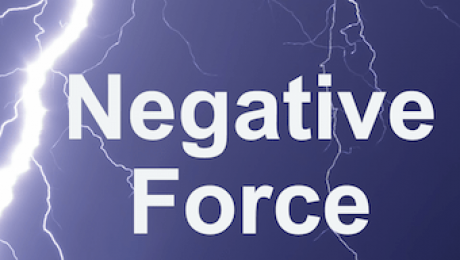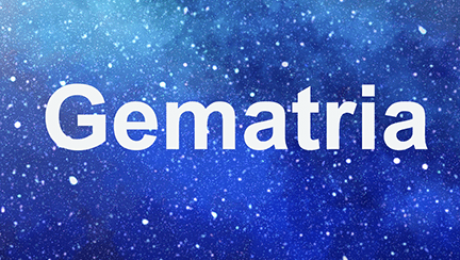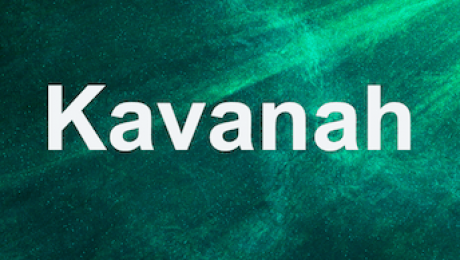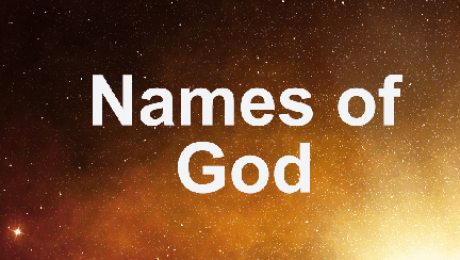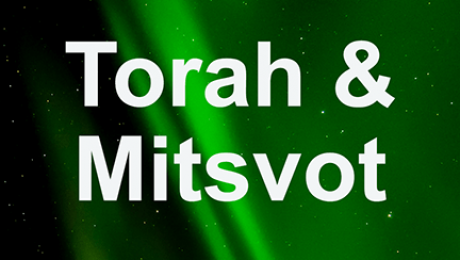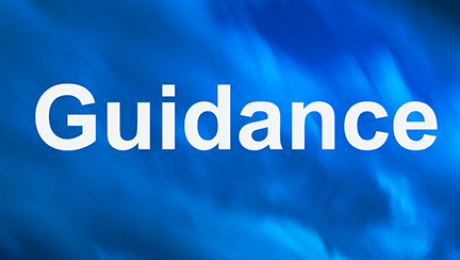The Mo’hin are the directive force given to a configuration by one or two superior configurations. Depending on the state of growth, there are Mo’hin of Katnut – infancy – and of Gadlut – growth. There are also Mo’hin that enter the lower configuration – interior, and Mo’hin that encircle him – exterior. These directive forces vary in strength and intensities.
During gestation, the directive force are at the lowest level and are called NHY (נצח, הוד, יסוד) of the Mo’hin; they are of the aspect of נפש.
During the suckling, the lights grow and the directive force are at a higher level; they are called HGT (חסד, גבורה, תיפארת) of the Mo’hin and are of the aspect of רוח.
During growth, the directive forces are now fully developed to guide with the full force of HBD (חכמה, בינה, דעת); they are of the aspect of נשמה.
Two distinct Mo’hin come to ז׳א: directive forces of אימה arrive first, and then the directive forces of אבה, second. The directive forces that are given from אבה and from אימה to ז׳א, are called his Tselem (צלמ) and do not completely enter into him
The ones that enter inside the lower configuration – interior, are the three Sephirot NHY (נצח, הוד, יסוד) of the superior configuration, they divide in three and are now composed of nine parts and correspond to the צ. They spread into the nine Sephirot of ז׳א.
The ones that do not enter are HBD, HGT of the higher configuration. They do not enter inside the lower configuration, but rather encircle him on the outside in the three-column arrangement of kindness, rigor and mercy. The encircling Mo’hin are of a higher aspect than the interior Mo’hin and correspond to the למ of the complete Mo’hin -צלמ
The HGT (חסד, גבורה, תיפארת) that surround him correspond to the ל
The KHBD (כתר, חכמה, בינה, דעת) that encircle him correspond to the מ
Before reaching its full force, ז׳א goes through three prepatory states. First, from his original six Sephirot (infancy 1) he will get his higher four Sephirot which are his directive force, from ISOT 2 (growth 1). When these directive forces exit[3] it is infancy 2, when they come back to him through ISOT 1 (אבה and אימה), he has reached his full growth (growth 2).
Therefore, for the two infancies and two growths of configuration ז׳א, there are directive forces corresponding to each one of these different states of growth.
Directive forces of infancy
There are two types of directive forces of infancy: Katnut (infancy) 1 and Katnut 2.
When configuration ז׳א only receives the NHY (נצח, הוד, and יסוד) of his Mo’hin – interior – but not the encircling, they are the directive forces of Katnut 1.
When he receives the NHY (נצח, הוד, and יסוד) of his directive forces directly from אימה, they are the directive forces of Katnut 2.
Directive forces of growth
There are two types of directive forces of Gadlut (growth): Gadlut 1 and Gadlut 2.
When configuration ז׳א receives all his directive forces – interior and encircling from ISOT, they are directive forces of Gadlut 1. When he receives all his directive forces directly from אימה, they are directive forces of Gadlut 2, and he has now attained his full maturity.
The Kabbalah is the mystical and esoteric explanation of the Torah. It teaches the unfolding of the worlds, the will of the Creator, the various ways of guidance of these worlds, the role of man in the creation, and more. No other writings explain in details; the creation of this world and the ones above it, the energies that influence its guidance, nor the final goal of everything. These writings are based on ancient Jewish texts and mostly on the Zohar.
The Kabbalah teaches us that the world is guided by an extremely complex system of forces or energies, which through their interactions provoke chain reactions that impact directly on man and the worlds. Each one of these reactions has numerous ramifications, with many details and results. It explains to us the true guidance of the world, so that we may understand the will of God. How and why He created the world, in what way He governs it, the provenance of the souls and angels, the reasons for the dualism of reward and punishment, etc.
The word Kabbalah comes from the verb Lekabel (to receive), but to receive it is first necessary to want, and to become a Keli (recipient) able to receive and contain this knowledge. The Kabbalah also demonstrates to us the importance of man, because only he, by getting closer to the Creator, can influence these incredible forces. For this, one has to elevate to a higher dimension of understanding, and start asking himself some very important questions like; “Why”, “What is the purpose of doing this act or this prayer”, “What are the outcomes of my actions” etc.
The other writings explain in the least details “how” to do, but only the Zohar and the Kabbalah explain to us the exact reasons, and effects of all our prayers and actions.
I believe that most yearn to serve at their best the Creator, but have been accustomed to execute and not seek further, or were kept away from this knowledge. It is now the time to know and learn this magnificent science, as it is written and recommended:
“From there, you shall seek the Lord your G-od, and you shall find him if you seek him with all your heart, and with all your soul.” (Devarim 4,29)
“The one, who was able to learn the secrets of the Torah (Kabbalah) and did not make an effort to understand them, will be severely judged”(Even Shelomo 85, 24). – HaGra, HaGaon Rabbi Eliyahu de Vilna
All the souls in this present world, that will make the effort to know their Creator through His secret writings (Kabbalah), will ascend higher than all the other souls that did not learn and understand, and will be first at the time of the resurrection. (Zohar, Vayeshev, 182, 2)
The man who learns Kabbalah is above all the others. (Zohar, Shemini, 42,)
The one that learns Kabbalah to understand the secrets of the Torah, and the purpose of the Mitsvot according to the Sod (secret), is called a “Son” of the Lord.(Zohar, Vayera)
And finally, the very clear obligation in the Torah “To know, now”, and not just believe:
“וידעת היום והשבת אל-לבבך כי יהו-ה הוא האלה-ים בשמים ממעל ועל-הארץ מתחת אין עוד”
“Know, today, and consider it in your heart, that the Lord is G-od in heaven above and upon the earth beneath, and there is no other.” (Devarim, 4.39)
Since the goal is to make the upper masculine and feminine energies unite, man has to “resemble” physically the higher masculine configuration, i.e. configuration זעיר אנפין. The Tefilin on the head represent the directive lights he receives from the higher configuration of אימה; the Tefilin on the hand represent the feminine configuration that attaches to his left side. The Talit represents his surrounding lights given also by the configuration אימה.
After configuration זעיר אנפין receives his directive lights from the higher configuration of אימה and they enter his head, they emerge from his forehead toward the outside in four different lights. The Tefilin of the head represent these lights; they comprise four compartments, each one containing a portion of text from the Torah, written on parchment.
Each one of these four lights also brings out an aspect of Levush (garment), which are the four compartments for the Parashiot.
Since the Mo’hin are directive lights that comprise ten Sephirot, the Tefilin are a representation of these ten lights:
The four compartments on the forehead are the Sephirot HBD – חכמה, בינה, דעת (which divides in two).
The two straps on the side of the head are the Sephirot חסד and גבורה.
The knot on the back is Sephira תיפארת.
The two straps that come down on the sides are the Sephirot Netsa’h and הוד: Netsa’h until the chest and הוד until the navel.
The knot that makes the י (Yud) on the Tefilin of the hand is the Sephira יסוד of configuration ז׳א. From there (the arm of ז׳א), the building of the feminine configuration begins.
The Tefilin on the arm represent the feminine configuration Ra’hel. The order of the Parashiot is the same as in the Tefilin on the head, but in only one parchment.
The three wrappings on the biceps correspond to the three first Sephirot of נוקבה. The seven wrappings on the forearm correspond to the seven lower Sephirot.
The three wrappings on the finger correspond to the NHY (נצח, הוד, and יסוד) of ז׳א, which enter inside the נוקבה to be its Mo’hin – directive lights.
Since configuration ז׳א receives two types of directive lights, one from the configuration אבה, and one from the configuration אימה, there are two types of Tefilin:
- Tefilin of אימה are called Tefilin of Rashi. They are the regular type worn by all
- Tefilin of אבה are called Tefilin of Rabenu Tam. They are worn by only a few, together or after the ones of Rashi
The difference is in the order of the writing of the four Torah portions – Parashiot.
As we can see, every element of the prayers, whether physical or spiritual, has very deep and essential meanings to give important forces and power to the one praying. It is a pity that these powerful and beautiful rituals are taken mistakenly for “folkloric recitations” in an incomprehensible language, part of “one has to do” type of thing when attending a prayer in a synagogue.
By making the effort to understand the deeper meanings of these rituals, one will discover a whole new definition and reason for his special relationship with the higher worlds and his Creator
The soul has five levels, their names are: Nefesh, Rua’h, Neshama, ‘Haya and Ye’hida. The soul is the spiritual entity inside the body, the latter being only its outer garment. Each soul has a precise root and a possibility of acquiring the highest level of this root. All come first with a lower level, and will, if they merit, attain the next higher level.
Nefesh
The first and lower level. It is acquired at birth and before the succeeding levels. It corresponds to the level of the physical world of ‘Asiah and of the feminine configuration Nukva.
Rua’h
The second level and is acquired before the succeeding levels. It corresponds to the level of the world of angels – Yetsirah and configuration Zeir Anpin.
Neshama
The third level and can be acquired only after acquiring the level of Nefesh and Rua’h. It corresponds to the level of the world of souls – Beriah and configuration Imah.
‘Haya
The fourth level and can only be acquired after the preceding levels. It corresponds to the level of the world of emanation – Atsilut and configuration Abah.
Ye’hida
The fifth and highest level; it is very rarely attained and can only be acquired after the Tikun (rectification) of all the preceding levels. It corresponds to the level of the world of emanation – Atsilut and configuration Arikh Anpin.
Correspondence between the five levels of souls, four worlds and five configurations
| Soul | World | Configuration |
| Ye’hida | Atsilut | Arikh Anpin |
| Hayah | Atsilut | Abah |
| Neshama | Beriah | Imah |
| Rua’h | Yetsirah | Zeir Anpin |
| Nefesh | ‘Asiah | Nukva |
There are many divisions and categories of souls. They differ according to their origin or their level in the higher realms.
Each level of the soul is subdivided in five levels. As for the level of Nefesh, there are Nefesh of Nefesh, Rua’h of Nefesh, Neshama of Nefesh, ‘Haya of Nefesh and Ye’hida of Nefesh.
Each level of the soul has its own five levels
| Nefesh | Rua’h | Neshama | ‘Haya | Ye’hida |
| Ye’hida | Ye’hida | Ye’hida | Ye’hida | Ye’hida |
| ‘Haya | ‘Haya | ‘Haya | ‘Haya | ‘Haya (2) |
| Neshama | Neshama | Neshama | Neshama | Neshama |
| Rua’h | Rua’h | Rua’h | Rua’h | Rua’h |
| Nefesh (1) | Nefesh | Nefesh | Nefesh | Nefesh |
(1) Nefesh of Nefesh is the lowest level for a soul
(2) ‘Haya of Ye’hida is almost the highest
Each level of Nefesh subdivides again
| Level | Nefesh | Rua’h | Neshama | ‘Haya | Ye’hida |
| Nefesh | Ye’hida | Ye’hida | Ye’hida | Ye’hida | Ye’hida |
| Nefesh | ‘Haya | ‘Haya (1) | ‘Haya | ‘Haya | ‘Haya |
| Nefesh | Neshama | Neshama | Neshama | Neshama | Neshama (3) |
| Nefesh | Rua’h (2) | Rua’h | Rua’h | Rua’h | Rua’h |
| Nefesh | Nefesh | Nefesh | Nefesh | Nefesh | Nefesh |
Each level can again be subdivided, for example:
(1) ‘Haya of Rua’h of Nefesh is a higher level than
(2) Rua’h of Nefesh of Nefesh but lower than
(3) Neshama of Ye’hida of Nefesh
Each soul has its origin in the different worlds and configurations. The quality of the soul will depend on which configuration and from which world it has its root. A soul with a higher origin will be of superior quality and will have a better potential for understanding and approaching nearer to its Creator, on the condition, of course, that it acts accordingly and reaches its potential.
Each one of these levels of the soul subdivides for each level of Partsuf – configuration and for each world. Therefore, there are five levels of soul for each configuration and there are five levels of configurations for each world, etc. Each one of these levels can again subdivide in many, adding numerous possibilities.
The goal of man is to reach each successively higher level of his soul; for that, he must perform the Tikun of the preceding levels. The higher levels of the soul cannot be acquired at once. Most men only have the level of נפש, and if they merit, they will acquire the succeeding levels – but one by one by dying and reincarnating. If he needs to acquire the level of אימה of עשיה, first, he must perform the Tikun of מלכות of עשיה, ז׳א of עשיה, and so on. To acquire his level of נשמה, he must perform the Tikun of all the levels of the Sephirot and configurations of his נפש and רוח, etc.
To do this Tikun could take a few lifetimes, the soul will then reincarnate as many times as needed to accomplish it.
All these complex possibilities have only one purpose; to allow man to have merit by his own efforts and get closer to his Creator. For this, he must get a higher level of soul and elevate his ways by doing his own Tikun.
There is a “second” authority called Sitra A’hra – negative force or “evil”. Even though it is the opposite of everything good, it is important to understand that the origin of “evil” is from an emanation of the superior lights, and thus, it does not really have a complete independent authority. It nourishes itself from the lower extremities of the holiness, and needs permission to act from above.
There is really only one unique and full authority, and it is the one of the Creator.
At the creation, when the ten feminine Sephirot of the aspect of the name of BaN (52) came out from the eyes of Adam Kadmon, the first three Sephirot – KHB (Keter, ‘Hokhma, Binah) – were able to stand in the three column arrangement. However, the seven lower Sephirot did not stand in this order; they were not able to retain their lights and consequently broke. This was the first imperfection or damage in the creation. It is only when there are three columns, where the one of mercy stands between the columns of kindness and rigor that the three can attach and bind together for a harmonious balance.
This imperfect arrangement is the first origin of the negative force or “evil”. This type of existence could not come to be from a perfect source; it had to originate from a defective state.
The breaking of the seven lower Sephirot caused a descent of all the worlds. The world of ‘Asiah fell even lower and from its end, the negative force emerged.
The Sephirot have their root in the holiness of the Ein Sof, B’H. The root of the negative force is in the lack or absence of the holiness. These husks obstruct the lights of the Sephirot, concealing man from his root and from the light.
In parallel (opposite) to the four worlds, this negative entity has its own four worlds, where ten groups of negative angels divide as follows:
- three groups in their world of Beriah
- six groups in their world of Yetsirah
- one group in their world of ‘Asiah.
They nourish from the extremities of the higher lights when the latter are weakened by the bad deeds of the lower beings. When this negative force receives its strength by sucking on these higher lights, its destructive angels get more powers and come to do evil in the world.
The existence of the Sitra A’hra – negative force – was willed by the Creator to give man free will. With falsehood, it almost constantly tries to seduce him, and make him stumble.
The good deeds of man have an effect on the four higher worlds, his bad deeds on the four lower worlds. It is only when man sins that the negative side can grow in strength.
When man acts negatively, he attracts a derivative of this negative force that grows inside him. This is his Yetser Hara’; it cuts him off from the higher worlds and the holiness. When he acts positively, he attracts positive energies that weaken the negative energies inside of him and give him strength to come closer to its creator.
Husks – Klipot
The husks are the individual manifestations of the negative force. They obstruct the lights of the lower Sephirot by attaching and nurturing from their extremities. They conceal man from the truth and from the light. Because of the bad deeds of the lower beings, the husks get and renew their strength to do evil in the world.
The Tikunim (rectifications) of the lower beings consist in detaching these husks from the holiness, by accomplishing the commandments and by the prayers. When men act negatively, they produce contrary energies that cause deteriorations that reach the lower worlds and create even more husks to do harm.
There are four main levels of husks, they correspond to the four lower worlds. They too comprise Sephirot and configurations as in the positive worlds, and are also built on the three column arrangement of the Sephirotic trees. But they have the aim of acting contrary to the above positive worlds by emanating negative and hurtful energies.
There are different systems of interpretation of the hidden meanings of the Torah. One of them is the Gematria, where the mathematical values of each letter or word are calculated. Each letter having its own numerical value, the fact that some words have the same total is not just coincidence, but denotes a similarity or complementarity.
It is one of the different systems of interpretation of the hidden meanings of the Torah, where mathematical values of letters, words, and sentences are calculated to find a similarity or complementarity. Each letter has its own numerical value.
| Letter | Name | Value |
| א | Aleph | 1 |
| ב | Beit | 2 |
| ג | Gimel | 3 |
| ד | Dalet | 4 |
| ה | He | 5 |
| ו | Vav | 6 |
| ז | Zain | 7 |
| ח | ‘het | 8 |
| ט | Tet | 9 |
| י | Yud | 10 |
| כ | Khaf | 20 |
| ל | Lamed | 30 |
| מ | Mem | 40 |
| נ | Nun | 50 |
| ס | Samekh | 60 |
| ע | ‘ain | 70 |
| פ | Pey | 80 |
| צ | Tsadey | 90 |
| ק | Kuf | 100 |
| ר | Resh | 200 |
| ש | Shin | 300 |
| ת | Tav | 400 |
The final letters also have their own numerical values:
| Letter | Name | Value |
| ך | Final Khaf | 500 |
| ם | Final Mem | 600 |
| ן | Final Nun | 700 |
| ף | Final Pey | 800 |
| ץ | Final Tsadey | 900 |
There are seven main types of Gematriot:
- Ragil – regular
- Katan – small value
- HaKlali – value squared
- Kolel – regular plus a value for one or all the letters
- HaKadmi – regular plus the value of the preceding letters
- HaPerati – each letter squared
- Miluy- sum of the spellings
1 – Ragil: the numbers of the letters are as follows:
| From | To | Value |
| א | ט | 1 – 9 |
| י | צ | 10 -90 |
| ק | ת | 100 – 400 |
| ך | ץ | 500 -900 |
Ex : הארץ = 1106
2 – Katan: tens and hundreds are reduced to one digit.
| From | To | Value |
| א | ט | 1 – 9 |
| י | צ | 1 – 9 |
| ק | ת | 1 – 4 |
| ך | ץ | 5 -9 |
Ex : הארץ = 17
3 – HaKlali: the Ragil value of the word squared.
Ex : הארץ = 1106 * 1106 = 1 223 236
4 – Kolel: the Ragil value of the word + the numbers of letters, or + 1 for the word.
Ex : הארץ = 1106 + 4 = 1110
or 1106 + 1 = 1107
5 – HaKadmi: each letter has its Ragil value plus the total of all the ones preceding it.
| From | To | Value |
| א | ט | 1 – 45 |
| י | צ | 55 – 495 |
| ק | ת | 595 –1495 |
| ך | ץ | 1995 – 4995 |
Ex : הארץ = 15+1+795+4995 = 5806
6 – HaPerati: each letter is squared.
Ex : הארץ = 5 * 5 = 25, 1 * 1 = 1
200 * 200 = 40 000, 900 * 900 = 810 000 Total = 850 026
7 – Miluy: the sum of the spelling of each letter.
| Letter | Miluy | Value |
| ה | הא | 6 |
| א | אלף | 111 |
| ר | ריש | 510 |
| ץ | צדי | 104 |
Ex : הארץ = 731
By the Gematriot, we see that each letter and word has a dynamic meaning beyond the simple definitions. Gematria is only one of the secret ways of interpreting the hidden meanings in the Torah.
There are also permutation systems where letters are replaced by others in a set order as “ATBaSH” where the first letter is replaced by the last, the second by the one before the last etc. “Notrikun”, where initials of different words make a new word, and many other systems.
To reach a more active role in the unification of the different configurations, one needs to understand and concentrate when praying. There are different levels of Kavanah – concentration. The basic Kavanah is to understand the words, and concentrate on the intention of the blessing or the prayer. The higher level is to meditate on the different systems of permutation of names and configurations, to get a particular action or result. Each word or part of the prayers has its own action or purpose. These actions are initiated by concentrating on the different names of G-od, their appellations and other arrangements of the Autiot – letters.
When saying a blessing with the Kabbalistic meditation on the appropriate words or names, we act and participate directly on the Tikun – rectification of the action or thing being blessed. The purpose of most of the blessings recited before and after eating or drinking is to liberate the souls that have been reincarnated in these comestible elements.
When praying, it is important to be part of a Minyan – a group with a minimum of ten men. Without this minimum number, the Kadish and other important parts of the prayer cannot be recited. For the morning prayer, one also has to wear a Talit – praying shawl, and Tefilin – phylacteries wrapped on the head and left arm.
As we can see, every element of the prayers, whether physical or spiritual, has very deep and essential meanings to give important forces and power to the one praying. It is a pity that these powerful and beautiful rituals are taken mistakenly for “folkloric recitations” in an incomprehensible language, part of “one has to do” type of thing when attending a prayer in a synagogue.
By making the effort to understand the deeper meanings of these rituals, one will discover a whole new definition and reason for his special relationship with the higher worlds and his Creator
The forces or energies that make or influence the guidance are also identified or described as the different names of God.
The main names are:
- Y-H-V-H – י-ה-ו-ה
- Ein Sof – אין סוף
- Adona-y – אדנ- י
- Ahy-h – אהי-ה
- Elohi-M – אלוה-ים
Ein Sof– אין סוף
Ein Sof – The without limit or Infinite, is the most used Name for G-od in the Kabbalah. Since His light or energy cannot be measured by any definition or limiting terms, we therefore use the name “Ein Sof” (without limit) since we know and admit that G-od and the concept of limitlessness or without end is beyond our human comprehension. This name represents kindness.
Adona-y – אדנ- י
This name represents the feminine aspect of G-od; it has an aspect of rigor and is represented by the Sephira מלכות. It also represents the feminine configurations of Ra’hel and Leah. Since men’s prayers are first directed to the Sephira מלכות before they can be transmitted higher, this name also represents the closest relationship between man and his Creator.
Ahy-h – אהי-ה
This name represents the higher masculine aspect of G-od, and is represented by the Sephira כתר. It shows kindness together with the awe of G-od.
Elohi-M – אלוה-ים
One of the names of G-od, represented by the Sephira גבורה. In general, it denotes rigor in the actions of G-od.
Y-H-V-H (ה–ו–ה–י)
The primary name of G-od reveals kindness and mercy, represented by the Sephira תיפארת. All that was created has its origin in these four letters. Most of the guidance is manifested by this name and its different spellings that make new individual names.
By spelling each one of the four letters of this name differently, the numerical value of the name changes, and each one of these possibilities becomes different in its nature and actions.
| בן | BaN | 52 |
| מה | MaH | 45 |
| סג | SaG | 63 |
| עב | A”V | 72 |
The four Miluyim (spellings) are:
| ה | ו | ה | י | ||||
| עב | הי | ויו | הי | יוד | |||
| 15 | 22 | 15 | 20 | = | 72 | ||
| סג | הי | ואו | הי | יוד | |||
| 15 | 13 | 15 | 20 | = | 63 | ||
| מה | הא | ואו | הא | יוד | |||
| 6 | 13 | 6 | 20 | = | 45 | ||
| בן | הה | וו | הה | יוד | |||
| 10 | 12 | 10 | 20 | = | 52 |
Each name can also be divided and subdivided to describe even more precisely the different outcomes and manifestations of these energies:
‘A”V of ‘A”V, SaG of ‘A”V, MaH of ‘A”V …
BaN of BaN of SaG, SaG of MaH of ‘A”V etc.
The lights or forces that are clothed in these letters or their combinations emanate masculine or feminine configurations that make the guidance of the worlds.
Tikun in the Kabbalah is a very important notion. It shows, in a way, that everything that was created with a possibility of deficiency also has a potential to be rectified. In Hebrew, the word “Tikun” has different meanings; it can be understood as reparation or rectification but also as function, relation or action.
There are different types of Tikunim:
– Tikunim (reparations) that took place in the first emanations to repair the worlds.
– Tikunim (rectifications – relations) for the construction and inter-relations of the Sephirot and configurations.
– Tikunim (actions – functions) of certain configurations for the guidance of the world.
– Tikunim (rectifications) for the souls.
Tikunim (reparations) to repair the worlds: At the creation, when from the configuration of Adam Kadmon emerged the ten Sephirot of the feminine aspect of BaN (52), and the seven lower Sephirot broke. To sustain the recipients of these Sephirot after they broke, 288 sparks of their lights came down as well to keep them alive.
This important damage – Shvirat HaKelim – the breaking of the vessels needed to be repaired. A first Tikun was to help in the ascent of some of these fallen 288 sparks, and to repair the recipients that had broken when they fell, that they might return to their respective lights.
Tikunim (rectifications – relations) for the construction of the configurations
The Tikunim for the construction of the Partsufim – configurations are achieved by way of Zivug (union) of the higher masculine and feminine configurations, during which time the lower configuration will go through a period of gestation inside the feminine higher configuration, followed by its birth.Tikunim (rectifications – relations) of the configurations for the guidance: There are also Tikunim of different configurations which are their actions, illuminations, and inter-relations in order to influence the guidance of the worlds. These Tikunim result in various illuminations of different intensities, depending on time and the actions of man.
Tikunim (rectifications) for the souls: A Tikun for a soul is its rectification because of its unfulfillment or to cleanse it from any defect. The Tikun for the soul is realized by the Gilgul (reincarnation) and by the ‘Ibur (attachment). By accomplishing what he did not complete of the 613 Mitsvot, by rectifying an act or a damage he caused by his wrongdoings, man makes the necessary Tikun of his soul, which can now ascend to the higher realms and rejoin its source.
There are different types of Tikunim – rectifications for the soul, each one of its levels[1] needs its own Tikun. Most men only have the lower level of נפש, and if they do the proper Tikun, they will acquire the succeeding levels[2] – albeit one by one. A Tikun of a higher level can only be accomplished after all the preceding levels.
As long as one undertakes the Tikun of his soul within three reincarnations, he will reincarnate and return as needed to complete his Tikun. However, if he maintains his wrong behavior, he will not come back after the third reincarnation and this soul will be destroyed with no more chance of Tikun.
Tikun ‘Olam – General Tikun
Evil will disappear from this world and change to goodness, when all the general Tikunim – rectifications will be completed[3]. The general Tikun is to bring back the world to its former state before the damage caused by the breaking of the vessels. A state of harmony where kindness, bounty and peace prevail and rigors are appeased, when all the fallen sparks of holiness will be bought back up to their origins because of all the positive behavior and acts of men. Consequently, the Sitra A’hra (negative force) will not be able to attach and nourish from the higher lights anymore and will cease to exist. G-od gave man an important role in the Tikun ‘Olam – general Tikun. It is now up to him to restore and make the necessary reparations to the world by observing His commandments, doing good deeds, and learning the ways of his Creator.
The final goal is to understand and accomplish His will, to deserve and merit closeness to His presence, and to finally help and participate in the revelation of His unicity to the world.
[1] Five levels of the soul
[2] After reincarnating again
[3] When the fallen sparks will ascend again
The Kabbalah is the mystical and esoteric explanation of the Torah. All the profound secrets explained in the Kabbalah, are alluded to in the letters, words and different stories narrated in the Torah. These stories as well as the shape of the letters, the vowels, and the cantillation notes are a Levush – outer garment on the real message and meaning of the Torah. The different systems of Sephirot and configurations of lights and energies are represented by the people and events in the Hebrew texts of the Torah. Therefore, the translations only cover the most basic meaning and can not reach into the real purpose and signification of the Torah as explained in the Zohar:
“Rabbi Shimon said: Woe to this man who says that the Torah came to simply relate stories in an ordinary language, because if this is so, even in these times we could make a Torah from ordinary tales, and even nicer than from those [tales]. If the Torah came to explain worldly subjects, even the governors of the [present] world have more interesting stories. If so, let’s follow what it [tale] says and make a Torah of it in the same way. But really, all that the Torah says is of very high nature, and of supernal secrets.
Therefore, the story in the Torah is the garment of the Torah. The one that thinks that this garment is itself the Torah and that there is nothing else, let his soul swell and have no part in the world to come. For this reason, King David said: (Tehilim, 119. 118) “Open my eyes so I may glaze the wondrous things in your Torah”. Meaning what is under this garment of the Torah.
(Zohar, Bamidbar, Behalotekha 58- 64)
The Torah has 248 positive and 365 negative commandments. Similarly, there are 613 veins and bones in man, 613 parts to the soul, and 613 lights in each Sephira or configuration. This number is not arbitrary, as there are important interrelations and interactions between them.
The Torah contains four levels of comprehension, of which the highest is the Sod (secret). At this level, the Torah explains to us the goal of creation, the real purpose of all the commandments and their influence on the Sephirot.
Through the knowledge of Kabbalah, we can arrive at a level of true understanding of the will of the Creator, His guidance, the creation, and in a way, “decode” the profound secrets of our holy Torah.
Mitsvot – commandments
In the Torah there are 613 Mitsvot and each one corresponds to one of the 613 veins and bones of man and to one of the 613 parts of his soul. By observing the commandments, man reinforces their strength, and by not accomplishing them, he, in a way, weakens them.
The Mitsvot were given for three main reasons:
· To reinforce and purify man
· To act on and influence the guidance
· To help accomplish the Tikun of the creation
After the breaking of the vessels and the fall of the 288 sparks, man has to act and participate in the ascent of the fallen sparks to their origin. This can be done by accomplishing the Mitsvot and by the prayers. As there are different levels of grasping the meanings and purpose of our actions, there are also various possibilities and powers of influence, depending on the understanding and intention of our acts.
The husks are the manifestations of the negative force to obstruct the lights of the Sephirot, and this degradation is caused by the sins committed by man. When accomplishing the Mitsvot, the lower beings send positive energies to weaken these husks and detach them from the higher lights, and thus remove any obstacles from the inflows and outflows of positive energies. Therefore, before each prayer and performance of the commandments of the Torah, we try to unify the masculine and feminine configurations so there will be harmony on high, and that a result or inflow of abundance will come down to us.
By understanding the profound meanings of these commandments as explained in the Kabbalah, we realize the enormous love that the Lord bestows to His creatures by allowing them to be part of this dynamic system, and by giving them the means and tools to reach the highest realms.
At first, the Creator was alone, filling all space with His energy. He was not bestowing His influence because there was no one to receive it. When He willed to create, He started to influence. Kabbalah is the only science that, in the least details, explains to us the true guidance of the world, so that we may understand His will.
The will of the Creator is to bestow goodness on His creatures; all the levels of creation and their guidance were put in place so His kindness could emanate to them, yet in such a way that they would be able to receive it.
The light of G-od is unique, of equal force, quality and beyond all description. The guidance of the world is manifested by different types of attributes such as rigor, mercy, etc. This unique light is therefore transformed or filtered by other lights, to give it various qualities or forces for a guidance based on the system of free choice, punishment, and reward.
These “transforming”, secondary lights are called Sephirot or Partsufim – configurations, and also attributes or qualities of G-od. A Sephira is, in a way, a “filter” that when the unique light enters it, transforms it into a particular force or quality by which the Creator guides the worlds.
The Kabbalah explains to us very precisely this true guidance, and how the worlds are guided by these extremely complex systems of forces or lights, which through their interactions provoke chain reactions that impact directly upon man and the worlds. Each one of these reactions has numerous ramifications with many details and results.
This complex system of forces or lights are the different Tikunim (actions) and Zivugim (unions) of the Sephirot and configurations to influence and make the guidance by means of their different arrangements and amalgamations.
There are two main kinds of guidance:
– The general guidance, which is for the subsistence of the worlds, and is not influenced by the actions of men.
This guidance is by means of the encircling Sephirot.
– The variable guidance, which is on the basis of justice, reward and punishment and is dependant on time and on the actions of man.
This guidance is by the linear Sephirot that are arranged in three columns: right, left and middle, representing the guidance of the world in the manner of kindness, rigor and mercy.
The guidance is mostly influenced by the different positioning and interactions of the masculine and feminine configurations, since they have a direct effect on the measure and balance of the factors of kindness, rigor and mercy.
The masculine configurations bestow kindness, the feminine bestow rigor. By their union, different equilibriums of the two forces of kindness and rigor make the guidance. Complete rigor will be the destruction of anything not perfect, while complete kindness will permit everything without restriction. However, these two aspects are necessary for the guidance based on justice, and for giving man the possibility of free choice.
The guidance is manifested by three main attributes:
· the attribute of kindness – right pillar
· the attribute of rigor – left pillar
· the attribute of mercy – middle pillar
The attribute of kindness
Kindness is mostly manifested by all the masculine aspects of the configurations[1], the Sephira חסד, by the concealments of the aspects of rigor and by the illuminations of the higher lights.
There are special moments, or days of bounty during the year, such as the Shabbat and Holidays. This is dependent on the different positions of the configurations[2]. When the masculine and feminine configurations are face to face, it is the ideal level and corresponds to the bestowing of abundance[3]. In the attribute of bounty, the guidance is from the right pillar – the pillar of kindness.
The attribute of judgment
Rigor is mostly manifested by all the feminine aspects as: the name of BaN (52), the Sephira גבורה and by all the concealments of the masculine aspects that represent bounty.
There are particular moments, or days of rigor during the year[4]. This is dependent on the different positions of the configurations. In the absence of Zivug (union), when the masculine and feminine configurations are back to back, it corresponds to dissimulation and rigor. In the attribute of judgment, the guidance is from the left pillar – the pillar of rigor.
The attribute of mercy
In the attribute of mercy, the guidance is from the middle pillar – the pillar of mercy. This attribute makes the balance between the attributes of rigor and bounty, to allow a more equilibrated guidance for the present existence. Without this equilibrium there would not be a possibility of guidance based on merit – reward and punishment, also called guidance of justice.
Will
All the Kabbalists agree that it is not possible to understand or have the slightest notion of the Nature of G-od, since our comprehension cannot attain this level[5]. However, by understanding these systems of guidance, we can learn to understand His will, how and why He created the world in what way He directs it, the purpose of the existence of evil, and the reasons for the dualism of reward and punishment, etc.
It is by understanding His will that we realize the importance of man, because only he, by getting closer to the Creator and observing His commandments, can influence these incredible forces that impact directly upon the guidance of the worlds.
Will to bestow
The will of the Creator is to bestow only goodness on His creatures, and to bring all the creation to participate in the revelation of His unicity at the end of the six thousand years. It is to give men the possibility of merit that His bounty is not revealed openly and that manifestations of the aspects of rigor are put in force.
There is no existence that is not composed of the aspects of the name of MaH (45) or BaN (52); the influencer and the receiver, the masculine and the feminine, bounty and rigor etc. The Ein Sof, B’H, influences when there is instigation from the receiver, the latter corresponding to the feminine receiving aspect of BaN (52). This influence is transmitted by the different illuminations of the Sephirot and then to the worlds.
It is the different equilibriums of the two forces of kindness and rigor that make the guidance. When rigors dominate harshness prevails, when bounty is in force, peace and kindness are bestowed. Thus, we see that everything that is, and happens, is always composed of a variable measure and balance of these two forces.
By allowing man to merit by his own efforts to get closer[6] to his Creator and receive His goodness, we see a very clear demonstration of His perfect justice.
Will to receive
By his nature man is himself a Keli (recipient) with a will to receive without limits, and containing a spiritual light; his soul. A guidance based on this desire of only receiving will not allow man to merit by his own efforts to get closer to his Creator.
These dual, attractive forces of good and bad influence man’s choices and the ways or levels of his service to the Creator. It is by his own free choice that he will choose his way and control these contrary forces.
The perfect goal for man is to elevate his bodily desires by sanctifying his ways, and resembling his Creator, by becoming a giver with a will to bestow goodness to all.
Free choice
The two main aspects of the present guidance, which are kindness and justice, were put in place to give man the possibility of serving the Creator by his free will.
At the creation, when the breaking of the seven Sephirot caused an important damage, G-od emanated lights of the aspect of the name of MaH (45) to repair the deterioration that was caused by this unbalanced inflow of energies. He could have done the complete Tikun (repair) of all the worlds with one emanation, but then, there would not have been a reason for the participation of man in this Tikun.
To give man the possibility of acting upon and repairing creation, G-od in a way, restrained His outflow of kindness to this world, to allow men to have merit by making the Tikun[7] with their own free will. While man’s good deeds have an effect on the four higher worlds, his bad deeds have consequences upon the four lower worlds. It is only when man sins that the negative side can grow in strength. The root of the Sitra A’hra (negative force) is in the lack or absence of the Kedushah (holiness). Its existence was willed by the Creator to also give man free choice.
The good and bad impulse
These forces of good and bad, positive and negative, are in a constant battle at the level of the world of עשיה (our physical world). Inside of man, these forces are: Yetser Hatov corresponding to his good or positive impulse and Yetser Hara’ corresponding to his bad or negative impulse.
This negative aspect (his Yetser Hara’) grows inside of man, cuts him off from the higher worlds, and uproots him from the Kedushah – holiness. It almost constantly tries to seduce him and make him stumble, while the Yetser Hatov (positive aspect), on the other side, tries to attract him to Torah and Mitsvot and to help him do the Tikun of his נשמה.
Without these two aspects of Yetser Tov and Yetser Hara’, men would be like angels, with no power to decide either on their actions or on their service to the Creator. Therefore, they would gain no merit from choosing good over bad, or following His commandments.
Free choice also gives rise to a system of perfect justice, whereby men will be punished or recompensed according to their own decisions and free choice.
[1] Aspects of the name of MaH – (45)
[2] It is because of the positions of these configurations every year at the same time, that these days are special
[3] Face to face allows a possibility of Zivug – union
[4] As the days of fasting
[5] But we can and are allowed to learn to understand His will from the time of creation
[6] By observing His commandments and by praying
[7] Bring back up the fallen sparks
A world is a possibility and a type of existence in a particular dimension. From the first configuration; Adam Kadmon (Primordial man), emerged the emanations that made the other worlds.
There are four worlds. The first to unfold from Adam Kadmon is called Atsilut, the world of emanation, where there is no existence of the separated and no negative force even at its lowest levels.
The second world is Beriah (creation), the world of the souls.
The third world is Yetsirah (formation), the world of the angels.
The fourth world is ‘Asiah (action), the world of physical existence
There is a screen (divider) that separates one world from another, and from this screen the ten Sephirot of the lower world emerge from the ten Sephirot of the higher world.
All the worlds are similar they each contain ten Sephirot and five main configurations: But the quintessence of the higher world is superior.
There is no interruption of the flowing of energies from both directions. All the worlds are joined by the last Sephira of the higher world which “connects” with the higher Sephira of the world under him. The three first Sephirot of configuration ‘Atik Yomin are in the Sephira Malkhut of the higher world, his seven lower Sephirot are in the first configuration Arikh Anpin of the world under it.
Atsilut – world of emanation
The first world, Atsilut, is the world of emanation, the world of divine thought. It is a completely spiritual world without any existence of separated entities. It brings into existence and sustains the other worlds. It is the highest of the four worlds, above Beriah, Yetsirah and ‘Asiah.
From Atsilut unfolded all the lower worlds, which are the source of existence for the physical worlds and the possibility of reward, punishment and evil.
Beneath Atsilut, the lights of its Malkhut collided, and a curtain was made between Atsilut and Beriah from the striking of these lights. From there, other configurations similar to the ones in Atsilut were formed in the lower worlds, but of a lower force since the lights were dimmed by the curtain. It is because of the diminution of these light’s intensities that existence for separated entities became possible.
Beriah – world of creation
The second world to unfold is called Beriah, the world of creation. It is the world of the souls. It is the first world where separate entities have the possibility of existence. These individual creations are of the highest spirituality; they are the souls with their full luminosity, before they descend into physical bodies. Beriah is under Atsilut and above Yetsirah and ‘Asiah.
Beneath Beriah, under its curtain, other Partsufim similar to the ones in Beriah were formed in the lower world of Yetsirah – Formation, but of a lower force since the lights were even more dimmed by the curtain. It is because of the accrued diminution of the light’s intensity that even more separated entities such as angels will come to be.
Yetsirah – world of formation
The third world to unfold is called Yetsirah; it is the world of formation, the world of the angels. After Beriah which has separated entities, albeit of the highest spiritual level, Yetsirah is also a spiritual world, but the angels that are its separated entities also have a spiritual form. This world is under Atsilut and Beriah but above ‘Asiah.
Beneath Yetsirah, under its curtain, other configurations similar to the ones in Yetsirah were formed in the lower world of ‘Asiah – Action. Because of the much-accrued diminution of the light’s intensity, physical entities will be able to exist.
‘Asiah – world of action
The fourth world to unfold is called ‘Asiah – Action, the world of physical existence. It is the furthest from the emanation of the light, which has now been filtered by the three worlds above it. All types of physical existence are now possible, and even the existence of opposite forces are allowed. It is the world of man as an entity composed of two contrary elements: a soul from the very high world of Beriah, and a physical body from the lower world of ‘Asiah. These two components are always in a condition of struggle, the soul being attracted and drawn to the realms of its spiritual origin, the body to this world’s physical pleasures and vanities.
From the last level of the Sephirot of ‘Asiah (Malkhut of ‘Asiah), the negative force emerged.
In parallel to the four worlds (ABYA), there are four types of existence in our world:
- mineral corresponding to עשיה (Action)
- vegetal corresponding to יצירה (Formation)
- animal corresponding to בריה (Creation)
- man corresponding to אצילות (Emanation)
The other entity, which is called Sitra A’hra (the other side, or the negative force), has its own four worlds of אצילות, בריה, יצירה and עשיה. It also has configurations, Sephirot, Hekhalot and angels, as in the positive world, but of a lower force.
- 1
- 2




